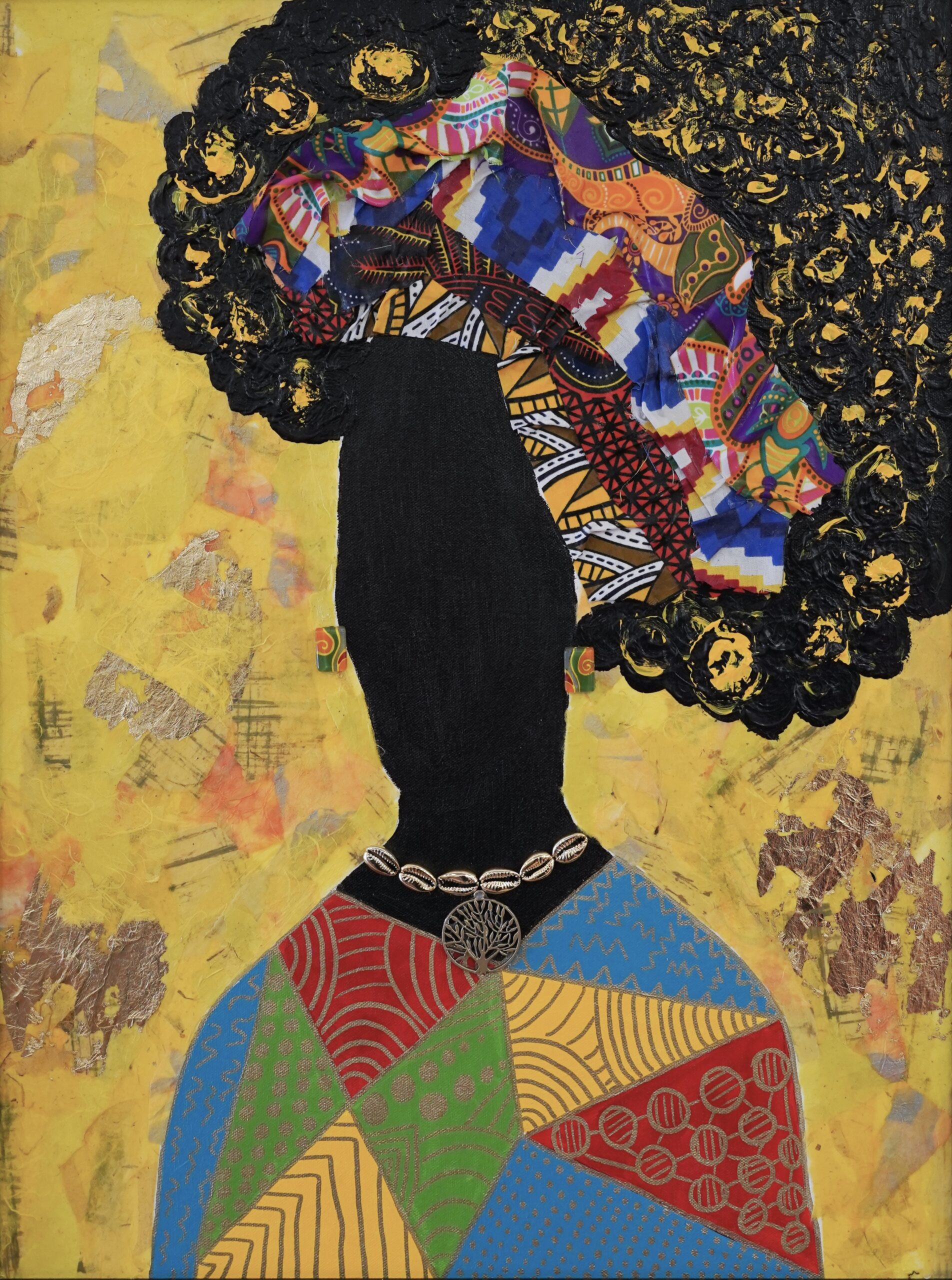Maria Estrela is a mixed media artist focusing in photography and more recently collage art. Estrela’s photographs focus on nature and travel as an expression of self-healing, stillness, and a doorway to the inner self. Her interest in collage began during a workshop led by artist Mansa Mussa in 2018. Now, her collages aim to foster the reunion of women with nature by recontextualizing their power. Maria curates art shows as well, notably at the West Orange Arts Gallery and Pop Up Art Shows. She is also heavily involved in activism in her community, the nuances of which we discuss in our conversation. ATA featured Estrela’s work in the 2023 show, The Soul of African American Art.
Q: You were born in Portugal and raised by your large extended family from Cape Verde. How would you say your upbringing and your family play a role in the creation and inspiration for your art? How do you remain connected to your Luso-African roots now living in Newark/Bloomfield?
I have been passionate about photography since I was very young. My father gave me a camera when I was 13, and I started taking photos of everything. My oldest sister is a fantastic artist; I remember her drawing portraits of everyone in our family. She is so talented. She was my first inspiration, and I wanted to be an artist like her.
Living in a multicultural family, both Portuguese and Cape Verdean, I listened to the songs of the iconic African “Barefoot Diva” Cesária Évora and the Portuguese legend Amalia Rodriguez. These artists inspired me to create art that expresses my identity as Luso-African, a mix of Portuguese culture with my African heritage. To stay connected, I also listen to other Cape Verde music, eat traditional food, have gatherings with my friends, go to Cape Verde music concerts, read, research… connecting with people that can bring home to me.
Q: It’s clear that community involvement and activism is incredibly important to you. Is there a moment in your life that made you realize you wanted to make art and that you wanted to make art which advocated for others?
I really enjoy the arts scene in Newark. Particularly, how many artists are there and how they are so involved in activism and raising awareness about Black Lives Matter. So I feel a little bit of a connection with [activism in] the arts scene because during my time in Portugal there were periods where I faced discrimination. I was feeling what the artists in Newark are feeling.
When I started doing my photography it was a little bit more about landscaping. Recently, I started doing more collage work. As the years passed, the more art I began to see and more artists I started to know. I thought that I should start shifting my work to a different path which led to me creating art relating to the Black female experience, but also all communities of color. I want to empower women.
My art is a way for me to express what I was feeling [in Portugal] and what I feel about what Black women are going through now. I feel like women aren’t recognized for the work they do so I started creating more art related to that and made it in this form which empowers them.

Maria Estrela, Liberation III
Q: For you, what makes a piece of art great? Do you have a philosophy behind creating and curating art?
Art for me is a spiritual connection with the highest. It’s a feeling and a state of mind. To be able to have a piece that makes me smile and my heart is happy… that is when I feel a piece is great. I don’t have a philosophy when creating or curating art, it’s mostly about how the energy around it is connected with my inner self. For example, if things are tense around me I know my art will represent some tension as opposed to if things are calm. I want to show calmness and peace through my art.
Is there anything that you would like to highlight and share with the Art in the Atrium community and the larger BIPOC art community?
I encourage others to feel confident and proud of who they are and their culture. I also want to encourage others to be involved in the community doing volunteering work. It brings more awareness of the needs and the lack of representation. Volunteering opens the vision and minds of those who choose to become activists in their communities.
I am Vice president of a Nonprofit Organization named Miguel Vicente Monteiro Foundation, along with other members of the Cape Verdean Community from different organizations with organized drives and donations to help children in Cape Verde Islands. It is a great honor to be able to help back home.
